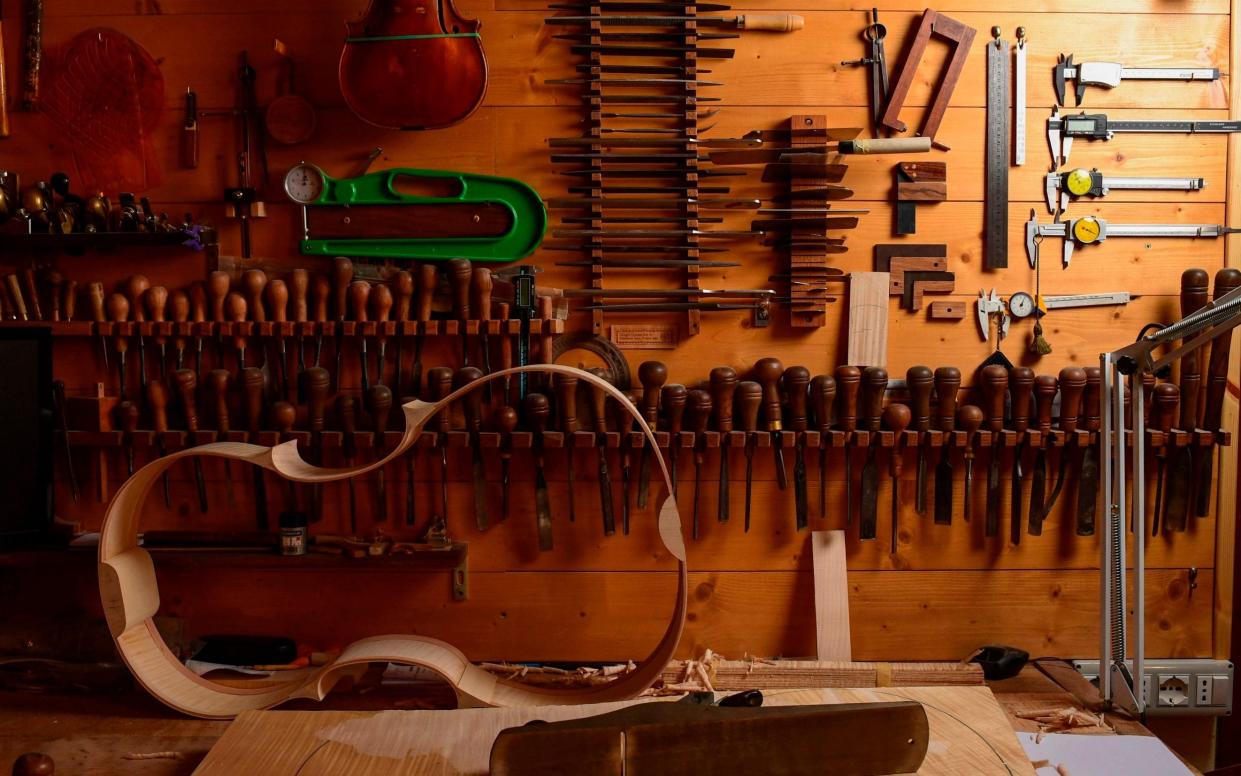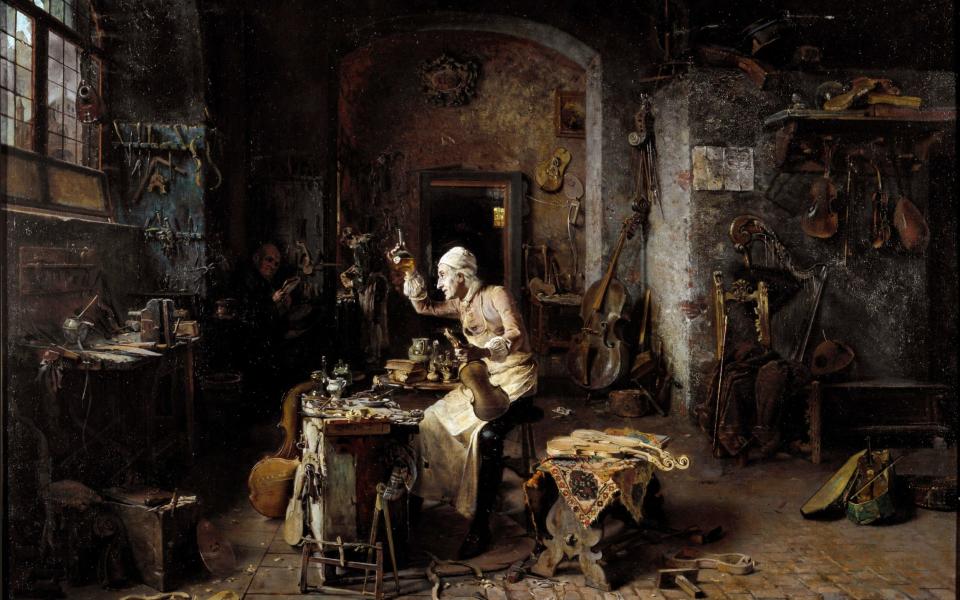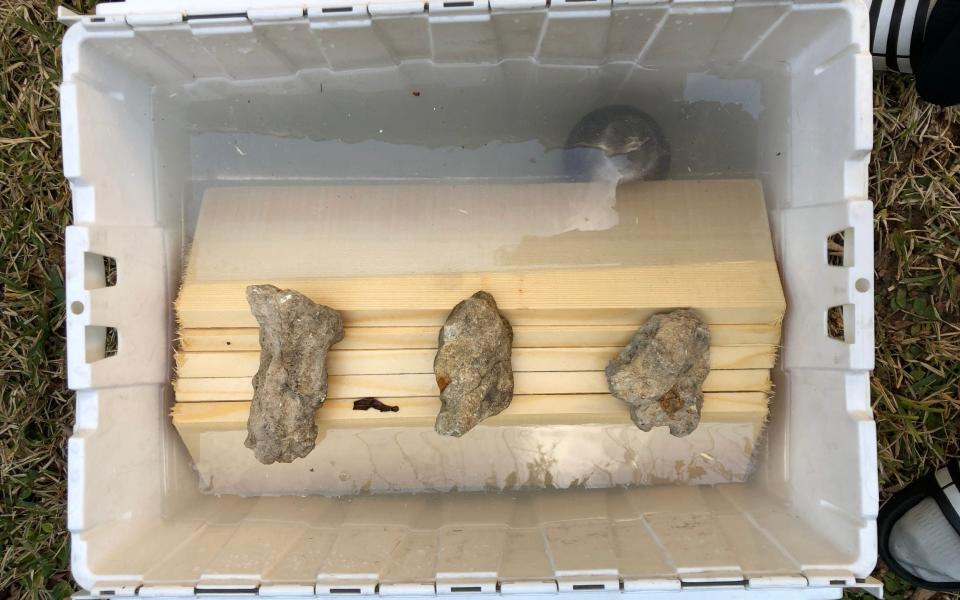Lost woodworking secrets behind Stradivarius violins revealed

Since the 18th century, violin makers have desperately sought to recreate the unrivalled sound of a Stradivarius instrument.
Now, almost 300 years later, they may finally have a chance.
Scientists trying to unlock the secrets to the violins’ famously smooth sound have discovered that a special coating of salt and potash could be responsible.
Modern manufacturing methods have thus far been unable to produce a violin to match the sublime sound projection and quality of Italian master Antonio Stradivari, who made around 1,200 violins during the 18th century before his secrets were lost to history.

In a bid to finally solve one of the great musical puzzles, Prof Joseph Nagyvary, Emeritus Professor at Texas A&M University and the doyen of Stradivarius research, along with Dr Hwan-Ching Tai at the National Taiwan University, obtained four extremely rare wood shavings from Stradivarius violins which were undergoing restoration work to their maple backs and spruce tops.
Such samples are in short supply due to the scarcity of surviving instruments and the reluctance to remove wood from multi-million pound antiques.
These samples were analysed alongside four Stradivarius cellos, a cello and viola made by Stradivari’s mentor, Nicola Amati, and two violins from Giuseppe Guarneri, another Amati apprentice who plied his trade in Cremona.
Chemical analysis of the fragments, ranging in age from 400 to 270 years old and weighing no more than 0.3 grams, revealed all the craftsmen treated their wood before they started building.
Amati, the originator of the method, coated his materials in borax as well as zinc and copper sulphates, the scientists found, which Prof Nagyvary says was to prevent worm infestation.
“Borax has a long history as a preservative, going back to the ancient Egyptians, who used it in mummification and later as an insecticide,” Prof Nagyvary said.

Amati’s descendents within his multi-generational luthier family adapted and intensified the concoction because they realised the treatment also improved sound. So too, it seems, did Amati’s pupils Stradivari and Guarneri.
The new study, published in the journal Angewandte Chemie International Edition, reveals they took the concept and experimented to make their own unique sound-enhancing potions.
Stradivari used brine, made with table salt, and potash to treat his wood.
Guarneri, his less esteemed contemporary who experts now say made just as high-quality instruments, used alum (potassium aluminum sulphate) and lime (calcium hydroxide).
“In my humble opinion, enhanced sound was a primary concern,” Dr Tai told The Telegraph.
“Their teacher [Amati] added some minerals like copper sulphate and borax in low concentrations, which seemed like chemical preservatives for wood.
“But Stradivari and Guarneri were much more aggressive with their chemical experiments. The purpose of those experiments were probably wood hardening and stabilisation.”
The scientists believe the ingredients for these simple coatings were bought at a local apothecary and applied shortly after the wood was harvested when it was still mildly moist.
“The alkaline treatment (potash or lime) led to the rearrangement of wood fibres. This is because the high pH caused the degradation of one type of wood fibre (called hemicellulose) and created extra space for the remaining cellulose fibres to move around and form thicker bundles,” Dr Tai told The Telegraph.
“The salt stiffened the wood by altering the distribution of water, kind of like the situation in salted meat.

“The alum stiffened the wood by forming chemical bonds between wood fibres. We call this chemical cross-linking.
“In a nutshell, they created stiffer wood with thicker cellulose fibre bundles. Stradivari did it with salt and potash and Guarneri did it with alum and lime.”
Chemical alterations to the wood fibres made it stronger and this allowed the craftsmen to make the vital soundboards – the most acoustically important part of a violin – thinner and stronger without cracking.
These soundboards improved sound intensity at lower frequencies, the researchers say, and “added brilliance and reduced harshness”.
The treatments were a fiercely guarded secret in Cremona and no written record of them survives.
By keeping their methods under wraps, both Stradivari and Guarneri ensured they made the best products in the world, but they also consigned their expertise and knowledge to the abyss of unrecorded history when the Golden Era of violin-makers came to an end in the mid-1750s.
“No one knew that they applied chemical treatments. In a sense, they fooled us for 250 years,” said Dr Tai.
“We are using analytical chemistry to reclaim some of the lost knowledge, but it is far from complete. I do believe that chemically altered wood is the last piece of the puzzle for their tonal advantage.
“I also believe that, once we properly understand wood modification by chemical and physical processes, highly skilful modern makers can match the tonal excellence of Stradivari or even surpass him.”
However, researchers warn that recreating the exact recipe and process will be extremely difficult, as reverse engineering formulas is notoriously challenging.
The academics say that the maple used in the violins is due to start degrading after 400 years and therefore some parts of the instruments may begin to deteriorate soon. Spruce is thought to take at least 800 years before it starts to break down.

 Yahoo News
Yahoo News 
